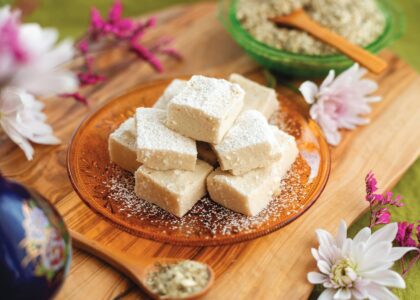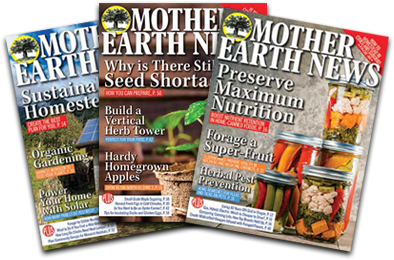Read about various livestock watering system designs and choose the best fit for your farm and animal needs.
Author and “Contrary Farmer” Gene Logsdon says farmers should design their grass-based livestock farms so they can spend as much time as possible sipping lemonade and watching the animals graze. If your animals graze most or all of the year on pasture, and if you put out big bales when you feed them hay, you’ll have many days without any feeding chores. But your critters can’t do without water, the most important nutrient for livestock. So, in the summer, you fill troughs every day. And in the winter, you head out every day — maybe twice — to break up the ice. We’ve broken a few axe handles doing that.
Technology can help — several companies build clever alternatives to the daily drudgery of supplying water to your animals. These “automatic waterers” essentially are appliances hooked into water supply lines that can provide a reliable water source for your animals without your daily attention.
To evaluate the benefits these devices can offer, we installed five automatic livestock waterers from several companies and ran them through four seasons with our cattle, goats and sheep. There are “cup waterers” and other designs intended for installation in a barn, but for this article we concentrated on waterers designed for installation on a concrete pad in a pasture. We didn’t want to use electricity, so we looked at only “energy-free” models, designed to resist freezing without electricity.
Many other designs exist, however. Watering systems are available in a wide range of materials and sizes for installation indoors or outdoors. They’re all basically the same: A drinking reservoir fills automatically when a valve is triggered by declining water level. However, designers have taken several approaches to the challenge of providing clean water reliably while minimizing evaporation in summer and freezing in winter. Consequently, some specialized terms come into the conversation.
“Energy efficient” generally means the unit is insulated heavily and uses a low-drain electric heating system. “Energy free” generally means no electricity is required to operate the waterer or prevent freezing, although some manufacturers say supplemental heat may be necessary to prevent freezing in extended periods of extreme cold. Manufacturers also say energy-free models are more likely to freeze if they aren’t used by at least a certain minimum number of animals. There also are “continuous-flow” models that prevent freezing by running water continuously through the container, with the surplus flowing into a drainage sump.
To discourage algae and mosquitoes, many outdoor livestock waterers have some sort of seal — a lid or floating cap — that the animal pushes aside to drink. All waterers, including energy-free units, require a pressurized water supply, and protection from wind helps minimize evaporation and freezing.
Plan for Efficiency
Before you decide to put waterers in your pasture, plan carefully, and account for your installation costs. The waterers themselves are relatively inexpensive, usually less than $700 or so — they’re easy to justify when you figure that you won’t need to buy any more water tanks, hoses or axe handles.
Installation, on the other hand, may set you back. You’ll need to run water supply lines, buried below your freeze line, to every waterer location, and the installation of the waterers is not straightforward. The water supply comes up through a deep insulated hole, and some of the fittings are unique. If you don’t do trenching and plumbing, you’ll need help from someone who does. Obviously, it’s critical to plan for effective distribution and efficient installation.
To install five waterers scattered around 50 acres, we paid nearly $7,000 for plumbing, pipes and trenching. All told, we spent slightly less than $2,000 per waterer. If we had dug our own trenches, laid our own pipe and done our own plumbing, we could have reduced that cost to less than $900 per unit. And if our pastures came together in a central location, we could have installed a simpler layout for even less.

Factors to Consider
Here are a few questions to help you choose the waterer that is right for you:
- What is the smallest number of animals in your pasture at any given time of the year? When the pasture is empty, you can simply turn off and drain the waterer (don’t forget to install individual shutoff valves on the lines to each unit). But if you keep a couple of bulls or billy goats in a winter pasture by themselves, they may not drink often enough to prevent an energy-free unit from freezing. Most energy-free units are designed for optimal loads of 25 to 50 animals.
- How cold is your climate? We found that some energy-free models, when adjusted properly, stayed unfrozen through the Kansas winter, even with just a few animals on them. Temperatures hovered around 20 degrees for a week or so, and our coldest stretch was four days with lows between minus 7 and 7 degrees. However, the waterers got a little frosty, and we figure they would have frozen in colder temperatures.
- How easy is it to check your water? Livestock owners know what it feels like to lie in bed fretting about whether their animals have water. We’ve all driven away from the house wondering whether we should have stopped to check the troughs. Some automatic waterers have visible floats that are a different color from the rest of the appliance, making it easy to see whether there’s a sufficient amount of water in the reservoir, even from half a mile away.
Ease into Automatic Watering
If you notice that your neighbors have installed waterers, ask them about the advantages and disadvantages of the model they chose.
You might consider installing just one unit in a single pasture for the first winter to get a sense of its functionality. Or go the safer, more expensive route, and install waterers with electric heating elements. Of course, you’ll pay to install electric wiring and for the electricity. And the heater is one more thing that can malfunction; you might not notice an improperly adjusted thermostat and end up paying for heat year-round.
When severe cold is predicted, you may get worried about an energy-free waterer freezing. An inexpensive trough-heating element will work with most models, if the waterer is close enough to an electrical outlet. Just place the heater in your waterer and plug it into an extension cord. The cord is a nuisance, but you can unplug and remove it easily when not in use.
Outstanding in the Field
The most remarkable units we tried out were the “MiraFount” waterers from Miraco. They performed perfectly throughout the Kansas winter, even with minimal animal loads (a ram, two buck goats and a mule). One did freeze when we adjusted the water level too low and allowed the spherical water cap to float below the level of its opening. Aside from that, the MiraFounts were perfectly maintenance-free. Their round, blue, floating water caps are visible against their black housings from far away, so if you have a clear line of sight, you can check your reservoirs from indoors — a benefit we did not anticipate. The spherical caps also did a good job of preventing ice from forming in the reservoir. Miraco offers waterers in a wide range of styles and sizes, including models for poultry and pets.
On the farm, anything that prevents worry and drudgery increases your ability to work effectively with your animals — and to enjoy your lifestyle. Our automatic waterers definitely have enhanced our pleasure in livestock farming. Now, we find ourselves spending more time sipping lemonade and watching the animals graze — and drink.
Sources for Livestock Waterers
Livestock watering equipment is made of plastic, concrete, steel or other materials. Sizes range from single-animal bowls to feedlot troughs. Some manufacturers offer specialized designs for horses, cattle, sheep, hogs or mixed groups. Several also make poultry waterers. Prices do not include shipping and handling.
MiraFount Energy-Free Waterers– Available in seven models; company also makes many electric waterers.
Ritchie Waterers– Many models, some energy efficient, in a dozen product lines
SPI Livestock Waterers– Several models, some energy free
Bohlmann Waterers– Made of concrete; many models in a wide size range.
Brower Energy-Free Livestock Waterers– Available in several models; company also makes electric waterers
Cancrete Waterers– Concrete bowls with stainless steel components
Equuspring Waterers– Primarily for horses; models for stall or pasture.
Franklin Waterers– Three energy-efficient models and 12 standard models
Frostfree Nosepumps– No power needed for pumping or heat; livestock pump their own water
Hoskins Waterers– Numerous models for cattle, horses, sheep, hogs
HW Brand– Numerous models, some energy-free
The Jug Waterer– One-, two-, and four-bowl models, unheated/heated
Nelson Livestock Waterers– Eight models, unheated/heated
Pride of the Farm Polar-Max Drinkers– Energy-free; the company also makes electric models
Trojan Automatic Waterers– Available in six models
Water Consumption of Pastured Livestock
Animals on pasture get some moisture from the water contained in grass, but they need sufficient, reliable supplies of clean water to grow and remain healthy. Factors that affect water consumption include weather conditions, diet, activity level and access. The animals’ size and type are important, and physical condition (pregnancy, rapid growth, lactation) also can make a big difference in water requirements.
As a rough guide to how much water you should provide to your livestock, the following table shows typical consumption in winter and summer.
|
Gallons per day per head
|
||
|---|---|---|
|
Winter
|
Summer
|
|
|
Dairy cattle
|
17
|
21
|
|
Beef cattle
|
7
|
12
|
|
Cow-calf pairs
|
11
|
15
|
|
Young cattle
|
7
|
10
|
|
Horses
|
8
|
12
|
|
Sheep/goats
|
1
|
3
|
|
Swine
|
3
|
5
|
|
Chickens (100 birds)
|
8
|
10
|
|
Turkeys (100 birds)
|
10
|
15
|
After serving as the Publisher and Editorial Director of MOTHER EARTH NEWS and leading Ogden Publications for nearly two decades, Bryan Welch became CEO of B The Change Media, a multi-platform media company founded in cooperation with B Lab and the B Corporations.
Originally published as “Water Without Work” in the August/September 2006 issue of MOTHER EARTH NEWS magazine and regularly vetted for accuracy.







